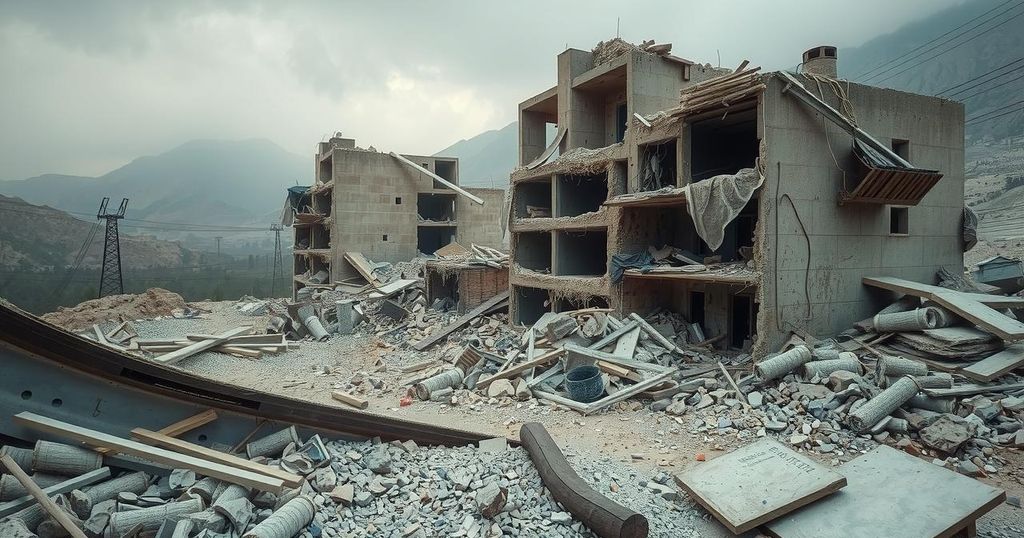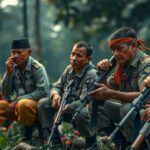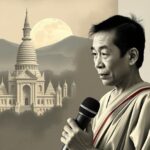The Complications of Earthquake Relief Amid Myanmar’s Ongoing Civil Conflict
Myanmar faces immense challenges as its civil war disrupts relief efforts following a 7.7 magnitude earthquake. Over 3 million people are displaced due to the conflict, complicating humanitarian access. A unilateral two-week ceasefire declared by the resistance aims to facilitate aid, while the military’s history of manipulating aid raises concerns. The resistance’s actions seek to leverage international pressure for unrestricted aid distribution amidst ongoing turmoil.
Since gaining independence from Britain in 1948, Myanmar has faced a series of wars and natural disasters. The recent 7.7 magnitude earthquake has compounded this dire situation, as ongoing civil strife significantly hampers relief efforts. Since the military coup that ousted Aung San Suu Kyi in February 2021, the civil war has displaced over 3 million individuals and obstructed humanitarian access, exacerbating the crisis significantly.
In an unprecedented move, the primary resistance faction against the military junta has declared a two-week unilateral ceasefire in the earthquake-affected regions. This ceasefire, commencing on Sunday, is intended to facilitate the distribution of aid, though the junta’s lack of response raises concerns regarding the aid’s effectiveness.
The military has been criticized for manipulating aid, restricting access to food and medical supplies in areas controlled by resistance groups while favoring regions under its command. Humanitarian organizations express fears that the junta may once again limit foreign aid, as witnessed during previous crises.
The military, which has dominated Myanmar’s political landscape since independence, executed a coup in 2021, detaining Suu Kyi and numerous pro-democracy legislators. This triggered a nationwide armed uprising led by the National Unity Government (NUG) and its military branch, the People’s Defense Force (PDF). Although the PDF is outnumbered and under-resourced, it has successfully controlled significant territories, especially in regions populated by ethnic minorities.
Operating from clandestine locations, the NUG asserts its legitimacy as a government-in-exile, formed by legally elected officials. The PDF, along with local defense units, employs guerrilla warfare techniques, showcasing considerable effectiveness, with some ethnic groups manufacturing their own weaponry to match the military’s might.
On March 30, the NUG reiterated its commitment to a temporary ceasefire, emphasizing its intent to collaborate with the United Nations and international NGOs for safe transportation and medical assistance in resistance-held areas. Additionally, it pledged to send medical personnel to military-governed zones conditional upon their safety.
The resistance’s ceasefire, while largely symbolic due to infrequent large-scale offensives, enables it to adopt a moral superiority stance while exerting international pressure for unrestricted aid delivery. The junta, in a rare appeal for foreign support, faces skepticism and concern about utilizing aid as a mechanism for control rather than genuine humanitarian assistance. Previous episodes, such as the 2008 Cyclone Nargis disaster and the inadequate response to Cyclone Mocha in 2023, have tarnished its reputation for disaster relief.
In certain regions affected by conflict, natural disasters have previously prompted peacebuilding initiatives. However, in Myanmar, deep-seated military governance, pervasive distrust, and humanitarian access restrictions hinder the possibility of achieving a similar peace outcome. As relief organizations navigate the challenges of reaching earthquake-stricken areas, millions remain in peril, trapped between a devastating natural calamity and an unyielding civil conflict.
In conclusion, Myanmar’s ongoing civil war presents significant challenges for earthquake relief efforts, complicating humanitarian access and exacerbating the crisis for millions of displaced individuals. The recent declaration of a ceasefire and the willingness to cooperate with international organizations marks a significant, albeit tentative, step towards addressing urgent humanitarian needs. With a history of military obstruction to aid, the potential for effective disaster relief remains uncertain, as skepticism surrounding the junta’s intentions persists.
Original Source: www.republicworld.com








Post Comment